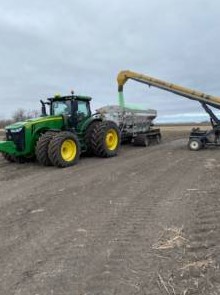By Matt Gast
The warm, very dry spring we have had in our area of North Dakota in the United States northern plains has been very different than the last two years. In 2019 and 2020, we got a lot of rain. Our fields were so wet that we were not able to plant them all. This year, we have not had any real substantial moisture since last August. While our subsoil moisture levels still are OK, that will not last for long. We are hoping for some rain, as we get ready to plant our crops.
We have been getting our equipment ready for spring. Because our growing season is so short this far north, we do not want to lose any time when we can be in the fields. That means tasks like checking tire pressure and parts on all our equipment and tractor. Where needed, we are replacing metal shovels and disks that will have direct contact with the soil with new pieces to minimize problems during field preparation and planting.
We also have been getting our fields ready for spring. With our short growing season, we need to help the soil warm up so our crops can germinate. In soybean fields, we typically use vertical tillage. This tillage helps chop up corn stalks and control weeds, minimizing the herbicide we will need to apply. I have looked at fields that have a heavy mat of corn residue when our air temperatures are as high as 27°C, or 80°F, and the soil underneath those corn stalks is freezing to the touch. Soybeans will not grow well in soils that cold. We do occasionally no-till soybean fields depending on weather and field conditions, but these fields require more herbicide for weed control.

In fields that will be planted to corn, we have been spreading dry urea fertilizer, with a stabilizer added to prevent nitrogen volatilization and ensure the nutrients will be available when the crop needs them. We incorporate this fertilizer with a field cultivator to make sure it stays in place, ensure the soil warms up and control weeds.
We also have been picking rocks or removing large rocks that have worked toward the surface of our fields. These rocks interfere with our soybeans and corn and can damage our equipment.
Click here to see more...